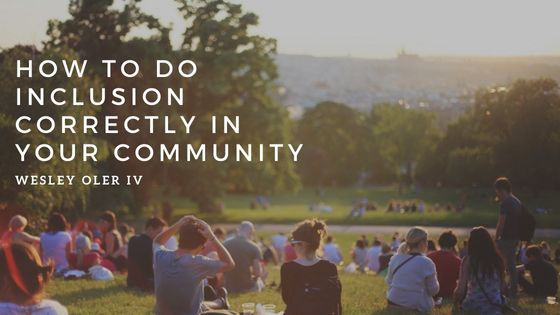In a world where diversity is more visible and celebrated than ever before, the concept of inclusion remains a cornerstone for building strong, vibrant communities. Inclusion goes beyond mere tolerance or acceptance; it’s about actively ensuring that all members feel they belong, are valued, and can participate fully in the community’s life. This approach recognizes that every individual brings a unique set of skills that can enrich the collective experience. Achieving true inclusion requires intentional effort, education, and, sometimes, uncomfortable conversations.
Break Down Barriers
The first step in promoting inclusion is identifying and dismantling barriers preventing individuals from fully participating in the community. These obstacles can be physical, such as inaccessible buildings or public spaces for people with disabilities, or more intangible, like language barriers or cultural misunderstandings.
Communities can install ramps, provide sign language interpreters at public events, or offer translations for critical community materials. Beyond the tangible, it’s essential to create spaces where community members can express concerns about hidden barriers they encounter. Regular town hall meetings or feedback forums provide these opportunities. Identifying and addressing barriers should be continuous, adapting as the community grows and changes.
Amplify Underrepresented Voices
A genuinely inclusive community gives every member a voice, especially those who historically or currently feel marginalized. Prioritizing the representatives of underrepresented groups isn’t about silencing others; it’s about leveling the playing field.
Communities can establish platforms or forums dedicated to minority groups, allowing them to share their experiences and perspectives. Encourage local media outlets to feature stories and opinions from diverse community members. Moreover, representation in leadership roles is crucial. Communities should strive for diverse representation in committees, boards, and other decision-making bodies. Communities can make more informed, equitable, and holistic choices by ensuring that various voices are included in decision-making.
Cultivate a Culture of Learning and Respect
Inclusion isn’t a one-time initiative; it’s an ongoing process that requires continuous learning and mutual respect. An environment that fosters a culture of curiosity and openness is more likely to be inclusive.
This can be achieved by organizing regular cultural exchange events, workshops on unconscious bias, or community book clubs focusing on diverse authors and themes. Education, both formal and informal, plays a pivotal role. Schools should incorporate inclusive curricula, and community centers can offer workshops on different cultures, traditions, and histories. The goal is to nurture understanding, dispel myths, and break stereotypes.
Inclusion is more than just a buzzword or a box to check off; it’s the heart of any thriving community. Inclusion reinforces the idea that every individual, regardless of their background, abilities, or experiences, is vital to the collective well-being and success of the community. By breaking down barriers, amplifying the voices of those often overlooked, and promoting a culture of continuous learning and respect, we can create communities that are not only inclusive but also rich in diversity and understanding. Such communities will be better equipped to face challenges, innovate, and grow in a way that benefits all members.
